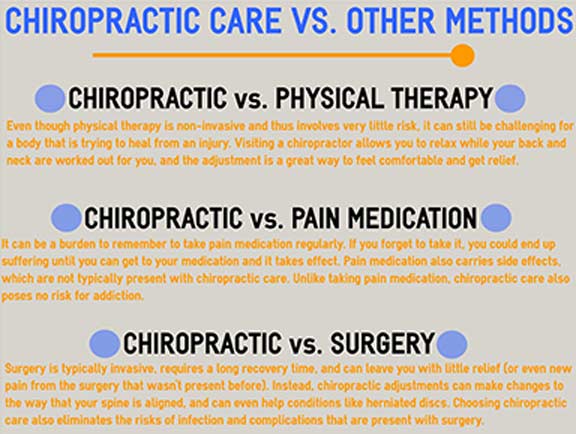The Influence Of Stance On Pain In The Back: Strategies For Sustaining Proper Alignment During Daily Activities
The Influence Of Stance On Pain In The Back: Strategies For Sustaining Proper Alignment During Daily Activities
Blog Article
Posted By-Conway Fraser
Maintaining proper position isn't almost staying up directly; it has to do with straightening your body in a way that supports your spine and lowers the risk of pain in the back. The means you sit, stand, and relocate throughout the day can dramatically impact your spine health. However exactly how precisely can you make certain great alignment continually, also throughout hectic days full of numerous tasks? Allow's dig lower.back pain into the subtle yet impactful adjustments you can make to your daily routine to keep your back pleased and healthy.
Relevance of Correct Posture
Proper position is vital in preserving a healthy back and preventing pain. When you rest or stand with good stance, your spinal column is in positioning, lowering strain on your muscular tissues, tendons, and joints. This placement allows the body to distribute weight evenly, protecting against excessive tension on specific areas that can lead to discomfort and discomfort. By maintaining your spine properly straightened, you can likewise improve your breathing and digestion, as slouching can press organs and limit their capability.
Furthermore, maintaining good posture can enhance your total appearance and confidence. When you stand tall with your shoulders back and head held high, you emanate confidence and appear even more approachable. Great posture can additionally make you feel extra stimulated and alert, as it promotes appropriate blood flow and permits your muscles to work efficiently.
Including appropriate posture right into your day-to-day regimen, whether resting at a workdesk, walking, or exercising, is important for protecting against back pain and promoting total well-being. Bear in mind, a little change in how you hold yourself can make a considerable difference in how you feel and operate throughout the day.
Common Postural Mistakes
When it concerns keeping great posture, numerous individuals unknowingly make common errors that can contribute to pain in the back and pain. One of the most widespread errors is slouching or stooping over while resting or standing. This position places too much pressure on the back and can lead to muscle inequalities and pain in the future.
Another typical mistake is overarching the reduced back, which can flatten the all-natural contour of the spine and cause pain. In addition, crossing legs while sitting might really feel comfortable, however it can develop an inequality in the hips and pelvis, resulting in postural concerns.
Using a pillow that's too soft or as well firm while resting can also impact your positioning and add to pain in the back. Finally, continuously craning your neck to consider displays or readjusting your setting frequently can strain the neck and shoulders. Bearing in mind these typical postural mistakes can aid you maintain better placement and reduce the risk of back pain.
Tips for Correcting Positioning
To boost your positioning and lower pain in the back, it's essential to concentrate on making small adjustments throughout your everyday routine. Beginning by bearing in mind your stance. When sitting, ensure your feet are flat on the flooring, your back is straight, and your shoulders are loosened up. Prevent slouching or leaning to one side. Use ergonomic chairs or paddings to sustain your lower back.
When standing, distribute your weight equally on both feet, maintain your knees a little bent, and embed your pelvis. Engage your core muscular tissues to sustain your spinal column. Take Learn Even more Here to extend and walk if you have an inactive work. Incorporate exercises that strengthen your core and back muscular tissues, such as slabs or bridges.
While sleeping, use a cushion that supports the all-natural contour of your neck to preserve correct spinal placement. Avoid sleeping on your belly, as it can strain your neck and back. By being mindful of these ideas and making small changes, you can slowly remedy your positioning and alleviate pain in the back.
Conclusion
Bear in mind, keeping great position is key to preventing pain in the back and advertising back health and wellness. By being mindful of your positioning, distributing weight equally, and engaging your core muscles, you can decrease pressure on your back and lessen the risk of pain and injury. Integrate ergonomic support, take regular breaks to extend, and reinforce your core and back muscle mass to preserve proper alignment throughout the day. Your back will certainly thanks for it!
